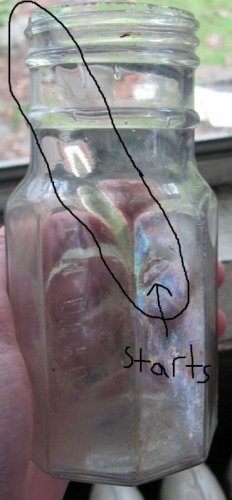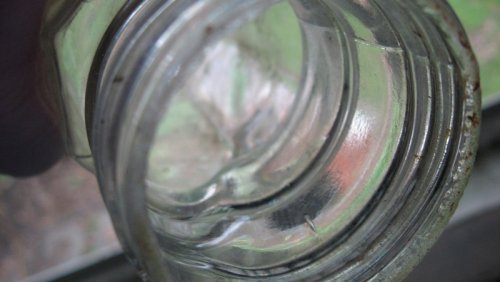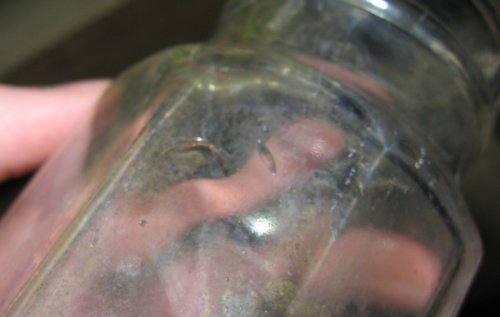Wheelah23
Well-Known Member
I found this in my dump yesterday. I believe it's circa 1900-1905. It's a ground lip screw top jar. It seems to be in the horseradish/pickle jar shape.
It's embossed "T. H. DEYO/ NEWARK, N.J." on two of its panels. It's octagonal. There's two curious things about it.
First of all, I already had a very similarly shaped bottle, except that one is an early machine made bottle. They were probably manufactured within 10 years of each other. The funny thing is, the one I already had is embossed "W.B. DEYO/ NEW YORK". Obviously the companies are related in some way. My guess is that "T. H. DEYO" was the original company owner. Maybe he died, and his son/brother inherited the company. Maybe they then moved their operations to New York as their business grew. This is all just conjecture, by the way...
New is on the left, it has a ground lip.

The second thing is that the new addition has a strange manufacturing flaw inside it. It's a large, thick ripple in the glass that starts below the shoulder and goes diagonally all the way to the bottle's lip. The outside is normal, except for a crescent moon, fingernail size/shaped indent in the glass right where the irregularity starts. I don't know what to call this flaw except a ripple.
Here are some pictures of it:



It's embossed "T. H. DEYO/ NEWARK, N.J." on two of its panels. It's octagonal. There's two curious things about it.
First of all, I already had a very similarly shaped bottle, except that one is an early machine made bottle. They were probably manufactured within 10 years of each other. The funny thing is, the one I already had is embossed "W.B. DEYO/ NEW YORK". Obviously the companies are related in some way. My guess is that "T. H. DEYO" was the original company owner. Maybe he died, and his son/brother inherited the company. Maybe they then moved their operations to New York as their business grew. This is all just conjecture, by the way...
New is on the left, it has a ground lip.

The second thing is that the new addition has a strange manufacturing flaw inside it. It's a large, thick ripple in the glass that starts below the shoulder and goes diagonally all the way to the bottle's lip. The outside is normal, except for a crescent moon, fingernail size/shaped indent in the glass right where the irregularity starts. I don't know what to call this flaw except a ripple.
Here are some pictures of it:









